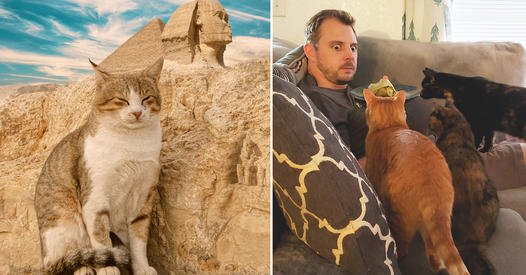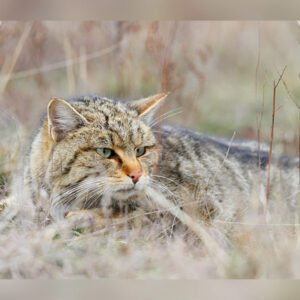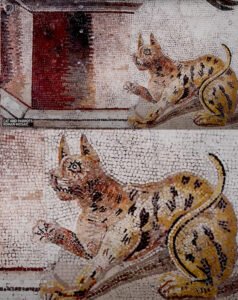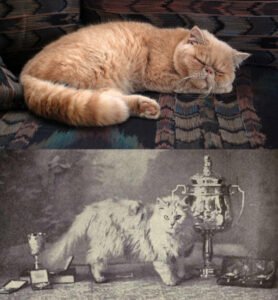
When you think of ancient cats, Egypt often comes to mind. It’s true that the Fertile Crescent in the Middle East was where agriculture—and the world’s first house cats—first took root. Some 12,000 years ago, humans started planting crops and needed a solution for protecting their harvest. That’s where cats came in, keeping pests in check as they still do on farms and fields today. In the Far East, prized cats protected precious manuscripts from rodents, holding a similar role.

Cats Domesticated Themselves?
Unlike most domesticated animals, cats didn’t need to be tamed. In fact, they may have domesticated themselves. The friendlier cats invited themselves into early human settlements, setting up what scientists call the “Commensal Pathway” to domestication. They offered pest control and, over time, their gentler traits made them desirable companions.
As Dr. Carlos Driscoll, an author of a study on feline domestication, explains, “Cats sort of domesticated themselves.” In the process, humans may have changed too, favoring docile traits in themselves and even in other humans as they grew closer to animals.

Ancient Cats and Dogs Changed Human Culture
Ancient pets may have had a greater influence on humanity than we realize. Some anthropologists argue that animals played a key role in our evolution. By preferring less aggressive traits in pets, early humans likely began to favor the same peaceful traits in themselves. As we formed bonds with cats and dogs, it could have helped us break away from our Neanderthal cousins, fostering more cooperative and social traits.

In Egypt, cats were sacred, often associated with protection and worshipped as symbols of fertility and home. Romans, too, viewed cats highly, valuing them as symbols of freedom. In both ancient Egypt and Rome, cats were revered to such an extent that harming a cat could result in severe punishment.

Cats Along the Silk Road
While Egypt might seem like the ultimate ancient cat haven, there’s evidence of pet cats elsewhere, including the Silk Road. In Kazakhstan, a thousand-year-old tomcat skeleton was unearthed, buried near the trade route. This cat had been well cared for, fed a nutritious diet, and treated for broken bones, showing it was a cherished pet, not just a working mouser.
Richard Thomas, a professor of archaeology at the University of Leicester, says, “This discovery marks an important change in human-animal relations in the steppe, emphasizing the link between pet-keeping and urbanism.”

Persian Cats in Ancient Persia
The earliest references to Persian cats date to the sixth century. In a Persian document, it’s noted that “women kept cats as pets, dyed their fur, adorned them with jewelry, and let them sleep in their beds.” Though the modern Persian breed likely originated in Iran and Turkey, little is known about its history until it arrived in Europe in the 1600s.

Ancient Cats in China and Cyprus
In northwestern China, the remains of 5,600-year-old cats reveal evidence of early human-feline coexistence. These Leopard Cats, a different species from today’s domestic cats, subsisted on rodents that consumed human crops.
In Cyprus, archaeologists discovered a 9,500-year-old burial of a cat with a human, marking one of the oldest known instances of human-cat relationships. This indicates that humans were transporting cats by boat, long before the Egyptian domesticated cats came along.

Who Changed Who?
Since the first Middle Eastern wildcat, Felis sylvestris, started interacting with humans, cats have kept us enchanted. They have influenced our lives for thousands of years and today, they are the most popular pets worldwide, outnumbering dogs in many places. Online, cats rule with viral videos and memes, confirming their lasting impact on human culture.
So, who really domesticated whom? It seems likely that both species have evolved together, but cats may always have held the upper paw.
